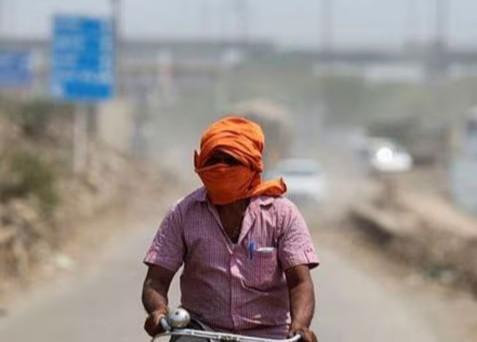
Extreme Heat Endangering Health & Productivity of Workers: Report
As the world continues to grapple with the effects of climate change, a recent report by the World Health Organisation (WHO) and the World Meteorological Organisation (WMO) has sounded the alarm on the severe impact of extreme heat on workers’ health and productivity. The report highlights the alarming consequences of heat stress, which can lead to significant declines in worker productivity, increased healthcare costs, and even fatalities.
According to the report, worker productivity drops by 2-3% for every degree above 20°C. This may seem like a small percentage, but when you consider the fact that many industries, such as agriculture and construction, are already facing significant challenges in terms of labor shortages and efficiency, the impact of heat stress can be devastating.
Manual workers in these sectors, as well as vulnerable populations like children and the elderly in developing countries, are particularly at risk. Heat stress can lead to a range of health problems, including heatstroke, dehydration, and kidney dysfunction. In severe cases, heat stress can even be fatal.
The report cites several examples of the devastating impact of heat stress on workers. For instance, a study in India found that heat stress reduced the productivity of agricultural workers by 20-30%. Similarly, a study in the United States found that heat stress reduced the productivity of construction workers by 10-15%.
The consequences of heat stress are not limited to individual workers. The report notes that heat stress can also have significant economic impacts on industries and communities. For example, a heatwave in Europe in 2003 was estimated to have cost the economy over $10 billion.
So, what can be done to mitigate the impact of heat stress on workers? The report offers several recommendations, including:
- Implementing heat stress prevention and mitigation measures in workplaces, such as providing air-conditioned breaks, offering hydration stations, and encouraging workers to take regular breaks.
- Conducting heat stress risk assessments to identify high-risk workers and implementing targeted interventions.
- Providing training and education to workers on heat stress prevention and mitigation.
- Encouraging employers to adopt flexible work arrangements, such as adjusting start times or allowing workers to take breaks during the hottest part of the day.
- Improving air quality and reducing air pollution, which can exacerbate the effects of heat stress.
In conclusion, the report by the WHO and WMO highlights the urgent need for action to protect workers from the devastating impacts of heat stress. As the world continues to grapple with the effects of climate change, it is essential that we prioritize the health and well-being of workers, particularly in industries that are most vulnerable to heat stress.
Source: https://repository.inshorts.com/articles/en/PTI/45d9bd2d-ff57-417c-9e5f-831344bb34b0






